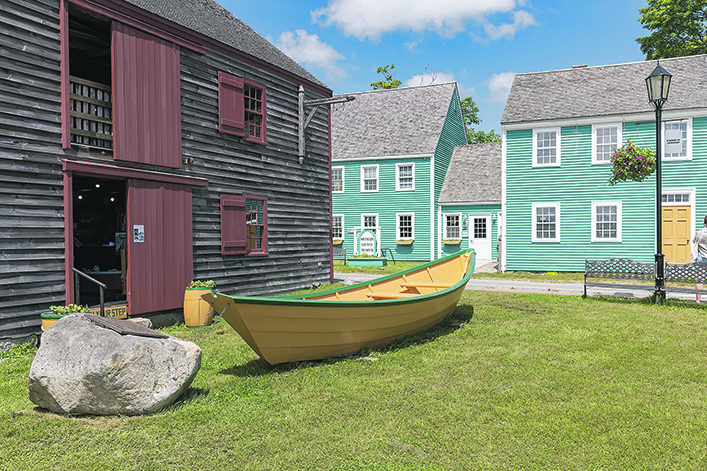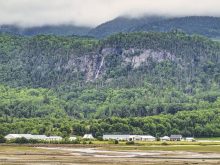Atlantic Canada abounds with historic towns and cities, though the one that impressed us most was Shelburne, near the southern tip of Nova Scotia. Arriving in this town of 1,600 seemed like stepping back in time to an 18th century seaport.
The community was founded in 1783 by United Empire Loyalists fleeing the United States following the American Revolution. Within a year, Shelburne’s population exploded to more than 10,000, making it bigger than Halifax, Montreal or Quebec.
While Loyalists came to many parts of Eastern Canada, Shelburne was unusual because of the high number of Black loyalists. Slaves in the U.S. who escaped and were willing to fight for Britain were given protection. Many were later offered settlement in Nova Scotia.
The community of Birchtown, just outside Shelburne, became the largest free settlement of people of African ancestry outside Africa. Visitors can learn more about their fascinating story by taking a tour of the Black Loyalist Heritage Centre in Birchtown.
With one of the largest natural harbours in the world, Shelburne became a centre for shipbuilding and fishing. However, that wasn’t enough to sustain the population boom that eventually went bust as most residents eventually moved away. One thing that they hadn’t counted on was poor, rocky soil that proved inadequate to grow food for so many people.
Many buildings from the 1780s remain. Most are meticulously kept up and painted in a kaleidoscope of colours. Some are now museums or operate as restaurants, shops and accommodation for visitors. The Cooper’s Inn, the bed & breakfast where we stayed, was built in 1785. The historic waterfront is so intact that the town is often used as a set for movies and TV shows portraying that era.

Some historic sites are less obvious. A local brewery and restaurant called the Boxing Rock is named after a nondescript rock in the harbour that is only exposed at low tide. Sea captains of old had a special use for it. When they found crew members fighting, they would drop them off on the rock with a jug of beer and the following instructions.
“Shake hands and share a beer, or box until one of you drops. We’ll be back before high tide to pick up one or both of you.”
The surrounding countryside is noted for its coastal scenery, several sandy beaches and picturesque lighthouses. The most unusual is the Sandy Point Lighthouse, which at high tide seems to rise straight out of the ocean rather than being on land. At low tide, it’s possible to walk out to it.
The waters just beyond these shores are considered the richest lobster fishing areas in the world, something that is celebrated at the Shelburne County Lobster Festival each June.
One aspect of Shelburne’s past that lives on is dory building. For more than a century, the dory was the backbone of the Atlantic fishing industry. Schooners carried several of these flat-bottom wooden boats, about 15 to 20 feet long, to fishing grounds such as the Grand Banks. They were then lowered into the water with a crew of two who did the fishing.

The building that now houses the Dory Shop Museum was once the largest of the seven dory shops that operated in town. The lower level is filled with displays but on the upper level they still build dories in the time-honoured fashion, mostly by hand using some 600 square nails. The pieces of wood are fitted together so precisely that no caulking is used. Even though dories are no longer used for commercial fishing, skilled craftsmen build a small number each year for people who order them, usually for nostalgic reasons.
Milford Buchanan, whose insignia on his shirt and cap identify him as a master dory builder, showed us around the shop. He explained that this officially recognized title is becoming increasingly rare.
“I think that there are only four of us left in North America,” he added.
Besides Shelburne, the other big dory-building community in Nova Scotia was Lunenburg. It seems that the rivalry between the two thrives. When asked what the difference is between Shelburne and Lunenburg dories, Buchanan’s answer is simple.
“Theirs leak, ours don’t.”
Arlene and Robin Karpan are well-travelled writers based in Saskatoon. Contact: travel@producer.com.


















